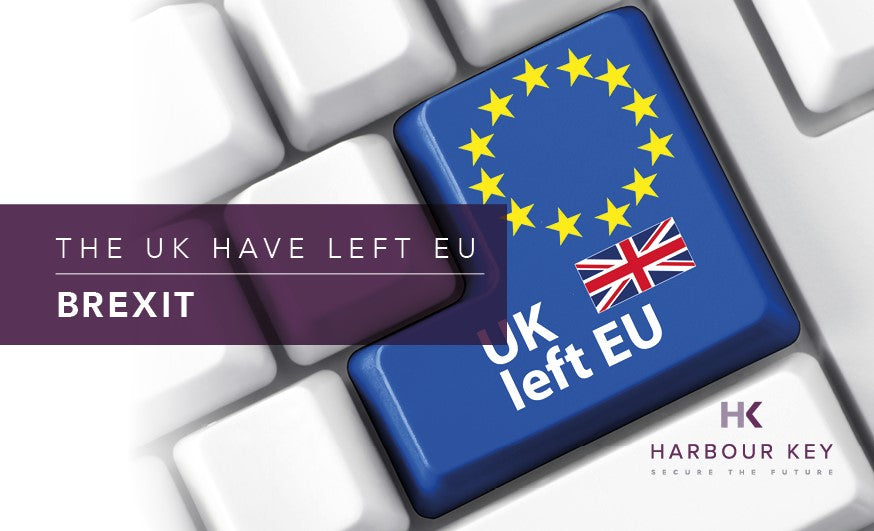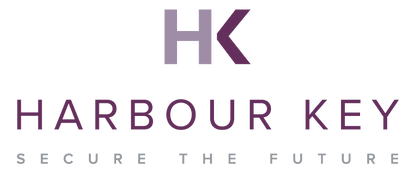
On Christmas Eve the UK Government announced that it had reached a trade agreement with the EU following the country’s exit from the EU on 31 December 2019, with the transition agreement ending 31 December 2020. Full details of the agreement can be found HERE.
The big headline and good news is that there are to be no tariffs on imports and exports of goods between the UK and EU. However, there are a number of procedural changes that businesses need to be up to speed with, the rules for Northern Ireland are different and some business areas, in the main services, are not covered by the agreement and are still to be sorted.
Limited guidance has been published by HMRC, due to the final agreement only having been reached late on Christmas Eve, and this is summarised below. The guidance published is subject to change, and it is anticipated that a better understanding of the new rules will result in guidance being updated in the near future.
VAT and duty – leaving the EU
At 11pm on 31 December 2020, the Brexit transition/implementation period ended, and the UK left the European Union.
As part of leaving the EU, the rules regarding importing and exporting goods and services changed, as well as the operation of VAT for goods imported into the UK and goods exported to the EU.
It should be noted that in order for goods to be moved freely between the Republic of Ireland and Northern Ireland from 1 January 2021, the rules for Northern Ireland are different to the rest of the UK (being Great Britain), and will therefore affect goods moving within the UK if these are moved to or from Northern Ireland.
Moving goods to Great Britain
Goods arriving into Great Britain (excluding Northern Ireland) from an EU member state, will be subject to UK customs procedures and import duties (including import VAT) in the same way as goods imported from the rest of the world.
The rules for moving goods to Northern Ireland are different, where these will be arriving from the EU or where goods are being moved between Great Britain and Northern Ireland.
In order for your business to import goods into Great Britain, you will need an EORI number that begins with GB. If you will be moving goods to or from Northern Ireland, you may also need an EORI number that starts with XI. The business sending you the goods may need to make an export declaration in their country or have licences or certificates to send goods to the UK. If you have not already applied for an EORI number, the application process can be found at https://www.gov.uk/eori
Customs declarations must be made when arranging the transportation of the goods, which can either be completed by you, or you can hire someone (an agent) to complete this process for you. Your supplier may already complete customs declarations where they are responsible for transporting the goods.
You will also need to find out the commodity code for your goods, and work out the value of your goods, which will determine the rate of duty you need to pay, and whether you need an import licence. The value calculated will be the value used for calculating any import VAT, payable when the goods are imported into the UK. You should also receive an Import VAT Certificate (C79), which you will need in order to claim back relevant VAT on your VAT return if paid at import.
For VAT registered traders a postponed accounting system for import VAT is to be introduced and provided a valid VAT number is quoted on the Customs declaration, any VAT due will not be payable up front. Instead, import VAT will be declared as output tax on the relevant VAT return and the same amount treated as input tax and recovered accordingly, subject to the normal rules. The HMRC guidance on postponed accounting can be accessed via this link.
Under the trade agreement made with the EU (called the UK-EU Trade and Cooperation Agreement), goods that originate in the EU and the UK will be subject to no tariffs or quotas on the movement of goods produced in the UK or the EU. Origin status is critical to the tariff free movement of goods and exporters meeting the origin status rules will need to obtain a preference certificate to ensure that 0% tariffs apply.
Exporting goods from Great Britain
Exporting goods from Great Britain to the EU will be subject to the relevant country rules, as well as subject to the UK-EU Trade and Cooperation Agreement.
You will need to obtain any relevant licences to export goods to the EU, and as with importing goods to Great Britain, you will need an EORI number that starts with GB (or one that starts with XI if moving goods to or from Northern Ireland). You will also need to check that whoever is receiving the goods can import them (there may be import licences required, etc.)
Customs declarations must be made as well as completing the transportation of the goods, which can either be completed by you, or you can hire someone (an agent) to complete this process for you. Your customer may already complete customs declarations as part of receiving other goods they purchase. The goods must also be classified using a commodity code (as with imports), which your customs agent or transporter might be able to help with, if you are using this service.
As with imports, the UK-EU trade agreement provides for a 0% tariff on goods that originate in the UK or EU. You will need to obtain a ‘proof of origin’ for your goods, to benefit from the 0% tariff rate.
In respect of VAT to be charged on goods being exported to the EU, the rules for Great Britain are the same as for exports made outside the EU prior to 1 January 2021, being based on the ‘place of supply’. Goods are normally treated as being supplied where they are located at the time of the supply and not where the supplier is located; therefore, goods from Great Britain, that are sent to EU destinations, will normally be treated as ‘zero-rated’ exports for VAT purposes. VAT will be payable by the EU customer at importation into the EU unless alternative arrangements are made – see comments re distance selling to non-VAT registered customers in the following section ‘Sending goods through the post’.
‘Zero-rated’ sales must be included in your VAT return, alongside local sales where VAT is charged, in the same way as before 1 January 2021.
Sending goods through the post
The rules for businesses sending through the post from Great Britain to the EU will follow the same process as sending through the post to countries outside the EU prior to 1 January 2021.
You will need to complete a customs form, which will be different depending on the value of the items being posted:
- For those items up to £270, form CN22 should be used, and
- For items above £270, form CN23 should be used.
The Post Office offers a Click & Drop online shop that allows you to purchase and print compliant address and customs labels. In respect of customs duties, customs clearance charges and fees may be payable on entering the destination country, and these depend on the content’s value.
Under the current arrangements for sales to non-VAT registered individuals, goods exported by UK businesses to EU consumers have either UK or EU VAT charged, subject to distance selling thresholds. From 1 January 2021, the EU distance selling arrangements no longer apply. UK sales to EU consumers will be zero-rated for UK VAT purposes, but EU import VAT will apply, and will be payable by the customer before the goods can be received. There will continue to be an exception to these rules for items valued at less than €22, under the Low Value Consignment Relief (LVCR) Scheme, up until at least 1 July 2021.
To avoid the customer being charged VAT, the seller can make (or arrange to make) the necessary declaration and payments through the carrier or agent, rather than the customer as part of shipping the goods to the customer. Alternatively, the stocks for EU sale could be held in the EU, to fulfil EU sales orders, and would then be subject to relevant distance selling thresholds within the EU in respect of VAT registration.
Between 1 January 2021 and 30 June 2021, either paying the VAT as part of the carrier/agent costs or leaving the VAT to be paid by the consumer, will be the only options for UK businesses sending goods through the post to EU consumers.
From 1 July 2021, the EU is intending to have an Import One Stop Shop (IOSS) set up, such that UK businesses can manage and make payment of VAT in respect of EU countries without having to register in each individual country or making a zero-rated sale and leaving the EU customer to pick up the VAT charge in their own country in order to receive the goods.
UK sellers who hold stock in the EU will also be able to use the Non-EU One Stop Shop (MOSS) system, which allows for UK retailers to file a single VAT return and pay the appropriate VAT rates on sales to consumers in all member states.
Moving goods to or from Northern Ireland
The terms of the withdrawal agreement and its Ireland/Northern Ireland Protocol create a unique status for Northern Ireland. It remains part of the UK’s customs territory but continues to apply the EU’s customs code, VAT rules and single market rules for goods from 1 January 2021. A consent mechanism means that after an initial four-year period from the end of the transition period, these provisions can only continue to apply with the consent of the Northern Ireland Assembly.
From 1 January 2021, there will be no changes in how Qualifying Northern Ireland goods move directly from Northern Ireland to Great Britain. Qualifying Northern Ireland goods are defined as those that are in free circulation in Northern Ireland (not being under a customs procedure on in an authorised temporary storage facility) before moving them to Great Britain. We understand that this means goods that originally started their journey in the EU and arrive in Great Britain through Northern Ireland will not be qualifying Northern Ireland goods. Goods produced in Northern Ireland will however be Qualifying Northern Ireland goods.
Goods that arrive in Northern Ireland from Great Britain and which are not deemed to be at risk of leaving the UK customs territory will not pay any tariffs. Goods which are at risk of entering the EU’s single market will pay EU tariffs (potentially subject to the preferential tariff rate under the EU/UK trade agreement on goods that originate in the UK). Declarations will need to be made when moving the goods into Northern Ireland which indicate how the goods are to be treated.
For goods moving to Northern Ireland from outside the UK and the EU, the UK duty rate will be payable if the goods are not ‘at risk’ of onward movement to the EU.
To move goods between Northern Ireland and non-EU countries (including Great Britain), you will need an EORI number that starts with XI.
The VAT rules for goods moving between Northern Ireland and EU member states are also different to the rules for Great Britain. VAT on goods traded with the EU is not collected ‘at the frontier’, and instead the way VAT is accounted for largely depends on whether the recipient of the supply is registered for VAT in the country of arrival.
Supplies to VAT registered customers will continue to be made as zero-rated supplies in most circumstances, with the customer completing the ‘acquisition tax’ process in their country. Supplies to customers who are not VAT registered are charged to VAT based on where the goods are dispatched from (normally where the supplier is based). Unlike for Great Britain, Northern Ireland businesses can still use the distance selling rules, such that they can charge UK VAT on distance selling to the EU, up to the distance selling threshold of the destination member state. Above this threshold, the Northern Ireland business will need to register and account for VAT in the relevant EU member state.
All Northern Ireland businesses carrying out trade with EU member states must declare the totals of these sales and acquisitions on their VAT returns and may also have to complete additional statistical information.
VAT on services between the UK and EU member states
The general rules relating to the supply of services outside the UK will now apply to EU member states in the same way as it has applied to non-EU countries prior to 1 January 2021. The place of supply of a service is the place where that service is treated as being supplied. This is the place where it is liable to VAT (if any).
If the supply is in the UK it is subject to UK VAT. If the supply is in an EU member state or in another country it is said to be ‘outside the scope’ of UK VAT.
There are different rules depending on whether you are supplying services to consumers (B2C) or businesses (B2B).
- The general rule for B2C supplies of services is that the place of supply is where the supplier belongs, irrespective of the location of their customer.
- The B2B general rule for supplies of services is that the supply is made where the customer belongs.
Although these are the general rules, there are a number of special rules that alter the basic rules and these should be considered before concluding on the VAT treatment for the supply of services.
UK business are no longer able to use the VAT MOSS system for digital services and the EU-wide VAT threshold for supplies of digital services to consumers ceases to apply to UK businesses. Instead, where the customer is located in the EU, you must either register for the Non-Union VAT MOSS scheme in an EU member state or register for VAT in each EU member state where you supply digital services to consumers.
Conclusion
Overall, the burden relating to importing and exporting with the EU have increased, with both increased administrative requirements alongside potentially more complicated VAT treatment. There are also a number of exceptions to certain rules, or relating to certain circumstances, so it has not been possible to cover all aspects in this advice note. If you are not sure on what action to take, we recommend that professional advice is obtained relating to your specific circumstances before coming to a conclusion.



